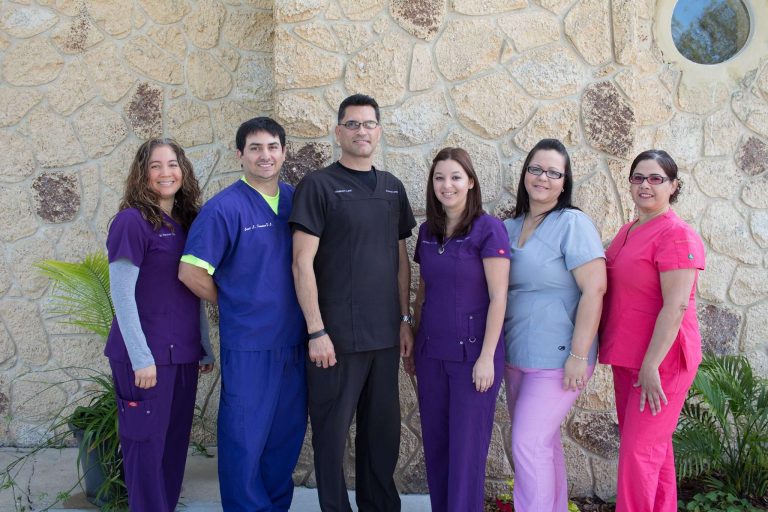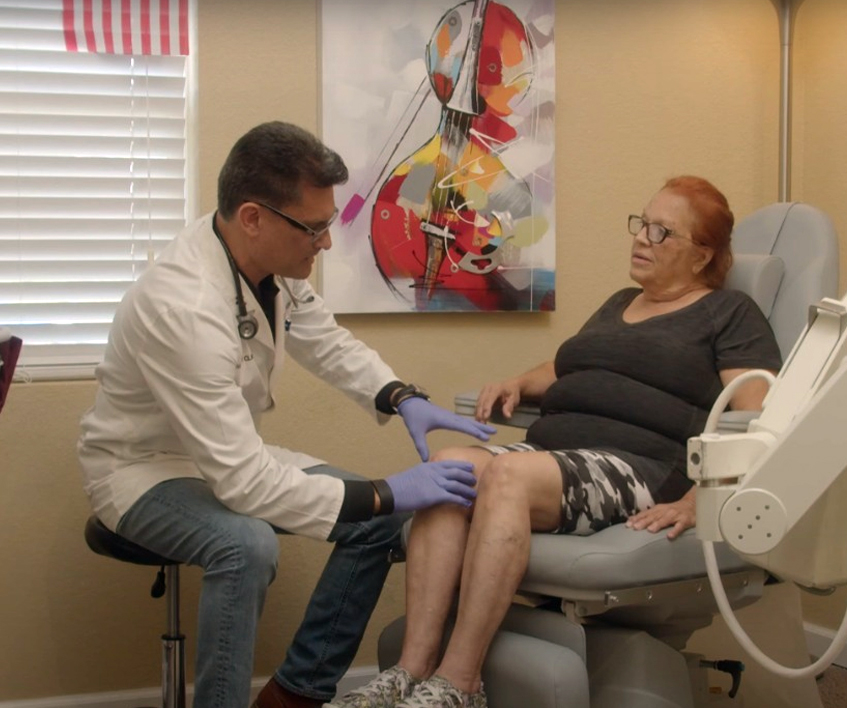Florida Stem Cell Treatment Center
Stem cells hold many different characteristics, but they all share two common features: in the appropriate environment of the body, stem cells are able to regenerate themselves and have the ability to become more specialized cells such as bone, blood, or muscle. Stem cell therapy involves the harvesting of stem cells from an individual, and then reimplanting them in the same individual, specifically in the area of pain or injury, in order to regenerate damaged tissue and eliminate pain.
What is Stem Cell Treatment?
Your body is made up of cells, and each type of cell has a specific purpose, except for stem cells. Initially, stem cells have no special purpose; they aren’t eye cells or skin cells, or muscle cells. However, after an injury, disease, or just the regular life cycle of cells, stem cells replace specialized cells. They can, essentially, become any cell that your body needs.
Stem cell therapy takes advantage of stem cells’ ability to become any type of cell you need. As such, stem cells can be used to replace degenerated cells or injured and damaged cells throughout your body. They can repair hurt areas, reduce inflammation, and regulate the immune system.
Stem cell therapy is still very new. The phenomena hasn’t been studied for nearly as long as other forms of treatment have been, but the results we do have are very positive. It is a treatment that has started to regularly be used to treat autoimmune disorders, inflammatory diseases, neurological conditions, and orthopedic conditions.
New studies have also started using stem cell therapy to treat Crohn’s disease, Multiple Sclerosis, Lupus, COPD, Parkinson’s, ALS, and strokes. These studies are newer yet, but the results seen have led researchers to believe that the future of stem cell therapies is bright.
Stem cell therapy does not cure an existing disease or disorder, and that is important to keep in mind. Treatment with stem cells simply helps your body heal and recover enough to ease symptoms. For disorders where patients are in pain or have their quality of life impacted, using stem cells can greatly improve their lives.
The stem cells used in most treatments are mesenchymal stem cells, and they can be found in fat tissue, umbilical cord tissue, placental tissue, bone marrow, and umbilical cord blood. Once obtained, stem cells can be administered in a variety of methods: IV lines, spinal injections, and site injections (knees, hands, hips, etc.).


Who Is Suitable for Stem Cell Treatment?
There is no list of who can and can’t undergo stem cells therapy, but there are a few recommendations or requirements before you are referred to a stem cells specialist or can undergo the therapy.
Patients with chronic pain or who suffer from injuries that won’t respond to other treatments like physical therapy or anti inflammatory medications are often referred to stem cell treatment. These patients may have a number of different health concerns or issues, but they may all benefit from stem cell therapies.
Although it is still a new therapy, for those who suffer from certain conditions, stem cells is a risk worth taking to improve your quality of life and day-to-day living.
Those who benefit the most from stem cell therapy may suffer from chronic ligament or tendon sprains. This includes rotator cuff injuries (both partial and full tears), tennis and golfer’s elbow, hamstring and hip sprains, ankle sprains, joint replacements, sprains or instability in the knee, Patellofemoral syndrome, sports injuries, patellar tendonitis, Achilles tendonitis, plantar fasciitis, sports-related hernias, athletic pubalgia, and osteoarthritis in the knees, hips, or other joint areas.
Although stem cell therapy is possible for the above injuries, stem cells are only used when other treatment methods have not worked. Stem cell injections are not often the first go-to solution, and more conservative treatments will often be tried before a patient is referred to a stem cell treatment specialist.
Stem cell therapy does come with some risks that are important to keep in mind. Regular stem cell injections are at risk of infection, bleeding, and nerve damage. If stem cell injections are done in the wrong place, further risks and complications can arise. This is why it is so important to only consult stem cells specialists who have all the necessary equipment to ensure proper injection placement.
Stem cell injections can be used by a large number of candidates, but it is important to talk to your doctor before assuming that you’re a great candidate for the procedure. Stem cell treatment is not a minor treatment, so those who choose to undergo it are those who cannot find other treatments to help them.
Benefits of Florida Stem Cell Treatment
Stem cell therapy can be used for pain management for chronic conditions without the need for invasive surgery and with less risk of complications. Many people have been choosing this type of treatment to find relief for many types of conditions.
Treating Multiple Conditions
Many conditions can be treated using stem cell therapy. This includes cardiovascular diseases, which deprive your heart of oxygen and alter your blood pressure or blood flow—leading to potentially serious issues with your heart. Stem cell therapy can repair the blood vessels in your heart through growth factors.
You can also find relief for autoimmune diseases, which can be severe and debilitating. These diseases happen when your immune system attacks your own organs, which stem cell therapy can counteract.
Brain Cells
Stem cell therapy can do more than just treat conditions—it can help repair parts of your brain as well. Some current treatments for Parkinson’s and Huntington’s show the creation of new neurons, cells, and synapses in the brain. While this is still being researched, this is a good option for many people.
Pain Relief
Stem cell therapy can help with pain relief for multiple conditions. For example, if you have spine-related or sports-related injuries, you should notice long-lasting pain relief over time. This is because this type of therapy decreases inflammation which causes pain.
Long-term Relief
You can use various medications to treat your symptoms, but it is a lot harder to treat underlying conditions. Ultimately, that is what you want to do: treat the cause of the problem. Stem cell therapy is meant to actually help with tissue repair and regenerate tissue in the affected area of your body.
Not only should you experience pain relief, but you should notice that your relief persists as your body heals.
Low Risk, Easy Recovery
Surgery can have a lot of complications or at least a significant recovery time. You do not have to deal with that with stem cell therapy.
Recovery time for this type of therapy is minimal. You may need to take a little time to rest, but the whole point of it is to get you back on your feet much faster.
Stem cell therapy uses biological materials that are already a part of your body. This means then that there is a much lesser chance that your body will reject the treatment or that you will experience any complications from the treatment.
Non-Invasive
You only need to sit while the stem cells are injected, which means that you have minimal risk of any associated damage to nearby nerves or any other area of your body. There is no need to administer any general anesthesia or anything else.
Part of the draw of stem cell research, which is why many people prefer it over surgery, is that it is completely non-invasive. You do not need to be put to sleep or anything because the entire procedure consists of an injection right into the treatment area.
Increased Function
You can find a lot of long-term relief with stem cell treatment, but you can also actually improve the way your body functions. You might notice over time that the part of your body that was previously hurt now has a better range of motion or more flexibility and that you can use it better than you could before.
That is because stem cell treatment works by restoring your body, not just treating the overall symptoms. It can help to replace damaged tissue and help cells regrow over time using this treatment.
Frequently Asked Questions About Stem Cell Therapy
When people hear about stem cell therapies or regenerative medicine, they tend to think that the process might be unfamiliar or that the whole treatment is controversial. Many patients can be a little hesitant to receive stem cell therapy at a stem cell clinic because of this and have questions concerning the treatment.
Stem cells are basically cells that can become any type of cell within the body. This is because they can divide without limits, so unlike other types of cells, they can divide into any other cell in the body—making them perfect for healing and to regenerate damaged tissue.
Your own stem cells help to heal the various parts of your body. Stem cells therapy is the treatment that gets those cells into your body. The treatment itself is minimally invasive, with just an injection needed.
Yes, there are indeed different cell types. In fact, there are two types that are found naturally: embryonic stem cells and adult stem cells. As the names suggest, embryonic cells are found in embryos, specifically embryos that are 3-5 days old. They develop into your other cells.
Every person has adult stem cells, usually in their bone marrow and adipose tissue in the stomach. Both can help heal injuries.


